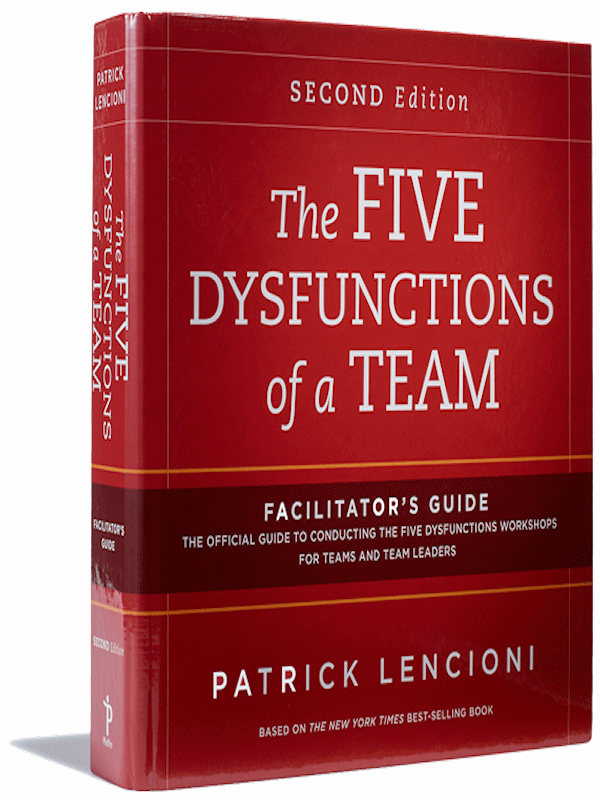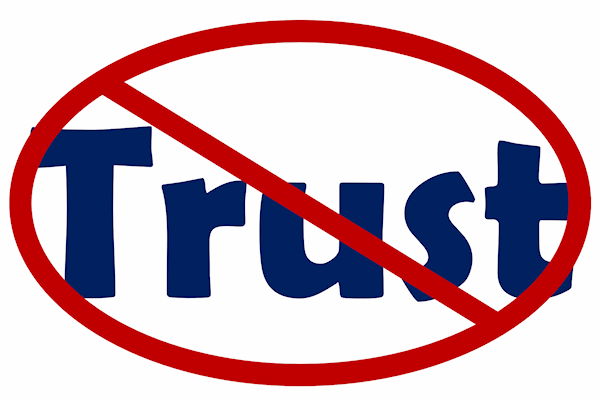By Jodi Walsh, Guest Contributor
Teamwork
It’s an elusive concept. When teamwork is great, it is often taken for granted; when it is bad, everyone suffers and few know what went wrong.
One thing is certain, those having high performance teams are able to achieve success, often exceeding what anyone believed could be accomplished or what each individual could have achieved alone.
Is great teamwork like a mystical creature? Something which appears out of the blue and then, just as suddenly, disappears? Can you bring it back with finely ground unicorn horn, eye of newt, and the wave of a magic wand?
Seeking magic seems similar to how many view lean, six sigma, or other improvement projects which require great teamwork in order to succeed.
Fortunately, great teamwork is neither a myth nor a random event. There are tangible actions you can take to achieve success. There are warning signs of dysfunction which all project leaders and team members must watch for.
Teams who strive for excellence must be on the lookout for these warning signs which point to potential disaster and must be addressed.

A Great Book
In his book “The 5 Dysfunctions of a Team”, Patrick Lencioni does an efficient and engaging job of simplifying this deceptively complex goal of creating a high performance team. 5 Dysfunctions takes the form of a leadership fable in which the senior leadership team of a small company struggles to develop a high performance teamwork culture.
In the course of telling this tale of the new CEO and her cast of C-suite characters, Lencioni demystifies what it takes to develop a team that works. Using entertaining and realistic details, Lencioni puts the academic model into a relatable story short enough to read in one sitting.
The 5 part model is easy to grasp, as Lencioni portrays and then describes the typical elements of team dysfunction and their functional alternatives.
Simply put, Lencioni’s 5 dysfunctions are:
- Absence of Trust – The tendency of individuals to protect themselves, or be careful, around other team members, when they feel their vulnerabilities, or weaknesses, will be used against them
- Fear of Conflict – The characteristic of treating emotion, passion, or frustration as unproductive discord, to be avoided or suppressed
- Lack of Commitment – While forcing public consensus, individuals believe other team members are silently disagreeing with the actions which have been publicly agreed to
- Avoidance of Accountability – There is an absence of positive peer pressure for the success of the team and no discussion about the consequences of failing to achieve the goals
- Inattention to Results – The tendency of individuals to care more about something other than success at meeting the team’s objectives
Let’s take a closer look at each one.

Absence of Trust
Teamwork requires rigorous sparring in order to refine and improve ideas.
All processes, whether well established or newly formed, require invasive examination when seeking dramatic improvement.
A lean transformation will challenge processes and organizational roles. It attacks the very essence of comfort in knowing how things “have always been done”.
Six sigma probes the sacred territory of subject matter expertise. It forces the question of examining data and facts to get at the root cause of variation.
The bigger the change, the more uncomfortable and threatening it can be.
The absence of trust leads to a huge waste of time, as team members spend energy on defensive behaviors, are reluctant to help one another, and do not seek help from others.

Fear of Conflict
Sparring reveals weakness and refines strength.
The bruises which happen in pursuit of perfection can make us stronger as we learn and become familiar with our limits and vulnerabilities in a committed team. The friction and fruitful combat which is so necessary to improvement can be perceived as threatening.
You can see the fear when conflict when teams fail to dissect the status quo for waste, fail to probe for the root cause of a problem, or fail to test for the weakness of an assumption. These actions will all preserve an artificial harmony and result in poor decisions.
This absence of passionate engagement and even disagreement, is frequently fatal to any transformation.

Lack of Commitment
Ideas or initiatives, which have not been effectively refined, can still be presented as seemingly “team approved” goals.
Actions to create consensus can look like seeking alignment, when they really just silence the opposition. The impact is to eliminate any ability to address individual concerns.
The pursuit of high levels of certainty can have the appearance of due diligence, but is simply a delay of action.
A team must wrestle with the uncertainties, misunderstandings, and inconsistencies around what they have been asked to pursue. They must recognize the risks they are taking, but not be paralyzed by them.
When every team member has put all their cards on the table, the entire group can move forward with clarity, even in the absence of consensus or certainty.

Avoidance of Accountability
A team who has committed to a clear and measurable goal can still fail to deliver.
“A 19% improvement in delivery performance in three months” is either achieved, or it is not. The source of success, or failure, can be diagnosed after the fact.
Along the way, however, a team must notice the behaviors and performance which are hindering forward progress at each step. The difficult conversations which must occur, between peers, in order to reveal and address shortfalls are uncomfortable.
This mutual accountability is not a managerial role – it is a team dynamic. These peer to peer confrontations require courage and mutual respect.
A dysfunctional team may avoid personal discomfort even to the point of team failure.

Inattention to Results
Leaders or team members may seek to achieve artificial harmony by defining success as “whatever has been accomplished”.
In the absence of commitment or accountability, preserving one’s ego or validating one’s status, rather than accomplishing goals, can become the “shadow mission” of the team.
Team members may define personal success outside the goals of the team, which causes scope creep. The reinterpretation of team goals, to the benefit of the individual, can delay or disable progress.
The inattention to results can result in the team losing the ability to deliver real value.

“Not finance. Not strategy. Not Technology. It is TEAMWORK that remains the ultimate competitive advantage, because it is so powerful and so rare.”
– Patrick Lencioni, Author of The 5 Dysfunctions of a Team
Application
The infection of these dysfunctions can appear in any kind of team – from executive leadership to people working in a production cell or working in cubicles. The responsibilities of team members remain, regardless of the simplicity or complexity of the goals they pursue.
Some of the types of teams which can be dysfunctional include:
- Leadership Teams
- Project Teams
- Cross Functional Teams
- Work Teams
Let’s look closer at each one.

Leadership Teams
Teams at the head of an organization have the added responsibility of setting the norm.
Effective teamwork around strategy and organizational initiatives will influence the behavior of teams with more concrete project or deliverable goals.
Team problems, at lower levels in the organization, can often be traced to bad habits at the top. Dysfunction in leadership is infectious. Fostering humility and encouraging real feedback from those who are led can be an invaluable opportunity for self-reflection in a leadership team.
As a leader, when your teams don’t work, look in the mirror first.
Project Teams
Coming together for a project poses unique challenges.
The team will often have a mission which needs to be accomplished in 90 to 120 days. There is not much time for the forming, storming, and norming phases of team development.
There needs a to be a strong focus on the project charter as the commitment each team member has agreed to pursue. The benefits outlined in the benefits section of the project charter defines the results everyone is accountable for.
A project manager must remain vigilant in addressing dysfunctional behaviors.
Cross Functional Teams
Defeating silos is an enormous challenge in many organizations. The temptation to defend territory, rather than collaborate for the good of the whole, is strong.
However, the opportunities for success in crafting robust value streams is even greater than the challenges of forming a high performance team. The waste and variation is often between the functional silos.
Cross functional teams who work, only occasionally, together are especially vulnerable to an inattention to results. They need to focus on value stream performance over the suboptimization of functional excellence.
Work Teams
It can be difficult to maintain the habit of heated debate and consistently walk away, without collateral damage, day after day.
Constantly challenging the status quo for improvement, and relentlessly pursuing excellence, can leave a team reluctant to engage every day.
It can be useful to pause and actively remember why debate and transparency are important.
A team leader should hold activities which build relationships and reinforce mutual respect. Celebrating continuous improvement with a trip to the bowling alley can work wonders.
Summary
The team which seeks organizational transformation or daily continuous improvement must commit to being a high performance team able to deliver genuine and sustainable results.
As outlined by Mr. Lencioni, they must:
- Trust one another
- Engage in unfiltered conflict around ideas
- Commit to decisions and plans of action
- Hold one another accountable for meeting commitments
- Focus on achieving collective results
In the end, good teams are hard work. Hard work pays off.

“There are no secrets to success. It is the result of preparation, hard work, and learning from failure.”
– Colin Powell
Complete An Assessment Now
Jodi is an innovator, with a passion for simplification of the complex and creating sustainable systems.
Formally educated at Northwestern University as a PhD Chemist, Jodi is an accomplished manager and leader with key strengths in manufacturing, supply chain, process engineering, and applied research and development.
With 23 years of experience at Lexmark International, she is recognized as a “go-to” person who directs work teams that exceed expectations and pursue continuous improvement. Jodi has developed people, products, processes, and organizations.
But, don’t think Jodi is all work and no play. She is a singer, gardener, home cook, and poet. She has a deep conviction that balancing professional time and personal time are critical to the well-being of people, processes, and organizations. Learning, technical rigor, innovation, and respect for the dignity of individuals are some of her highest values.
What is Line of Sight?
Project Champion Guidelines
What is The Fresh Connection?
Team Effectiveness Assessment
Challenges of Creating Alignment
Subscribe to our newsletter
References
Organizational Improvement Acronyms by Transformance Advisors
Organizational Improvement Definitions by Transformance Advisors

